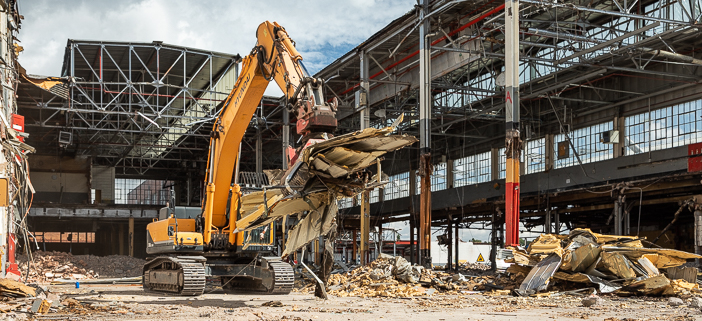Lockout/Tagout: Why is it Crucial in a Demolition Project?
Lockout/Tagout, otherwise known as LOTO, is a policy that requires a designated individual, known as the authorised person to turn off and disconnect construction equipment from its energy source before servicing it. This authorized person then discharges or blocks off any stored energy and locks and tags the machine’s energy-isolating devices to prevent the release of hazardous energy. This protocol is highly essential in a demolition project. Below are reasons why LOTO is crucial in a demolition project.

Lockout/Tagout Ensures Safety
LOTO is a key procedure to protect personnel from unexpected start up or energisation of machinery, including the release of hazardous energy during activities such as demolition, installation, or routine maintenance. Hazardous energy includes electrical, chemical, mechanical (gravitational, rotational), pressure, vacuum (pneumatic, hydraulic), thermal, and other energies that could cause harm. These procedures apply to fixed, permanently installed, portable, and temporarily installed equipment.
Lockout/Tagout Prevents Injuries
This critical procedure protects against the serious physical injuries that could occur when a hazardous piece of equipment suddenly starts up. You could avoid instances such as shock and electrocution, burns, cuts and slices, pinching and crushing, and death by adhering to the LOTO protocol.
Lockout/Tagout Safeguards Workers and Properties
Safeguarding workers, utilities, and adjacent properties is one of the reasons why LOTO is a must in any demolition projects. Activities can range from remodelling an area within a building to dismantling an entire structure and this can consist of multiple tasks that are hazardous by nature. One of those crucial tasks is shutting off, capping, or controlling all electricity, gas, steam, water, sewer, and other services, and this must be done with strict accountability from beginning to end. If power, water, or other utilities must remain on during demolition, these lines need to be temporarily relocated and/or protected. The location of any overhead power source must also be considered carefully because they can be particularly dangerous in a demolition.
Employees can be seriously or fatally injured if machinery they service or maintain unexpectedly energizes, starts up, or releases stored energy. Employers must always prevent accidents associated with hazardous energy. This standard addresses practices and procedures necessary to disable machinery and prevent the release of potentially hazardous energy while maintenance or servicing activities are performed.
Lockout/Tagout Isolates Energy Sources
As a key step in preparing a building for demolition, all hazardous energy sources must be isolated to prevent injuries. The sources must be isolated and then locked with a tag on the lock. This tag identifies the worker who placed the lock and tag, and that individual holds the key. When completed properly, this prevents any machinery or equipment left on site from sudden start up during a demolition.
Ensure the proper execution of the Lockout/Tagout regulation by hiring Demolition Company for your projects. We create innovative solutions that safely and professionally enhance the quality of any project.